Interview : Daisuke Yokota インタビュー : 横田大輔
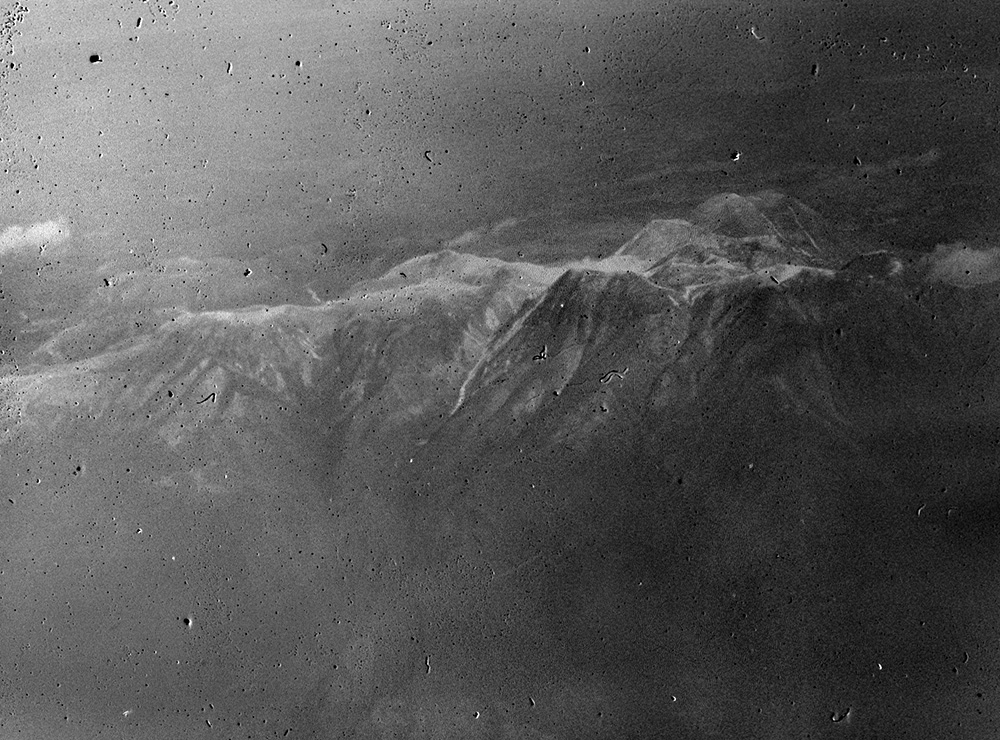
Daisuke Yokota
横田大輔
2013年にオランダの雑誌Foam Magazineの「Talent Issue」に選出され、その後、アムステルダムでのUnseen Photo Fairでの展示を経て、Foam Museumでの個展「site/cloud」の開催を迎えている横田大輔。その間にも、G/P Galleryでの個展開催、初の写真集リリースや木村伊兵衛賞ノミネートなど、国内外でその評価を確かなものにしている。初となる海外美術館での個展、進行中のアブストラクト作品、また最新作となるアーティストブック「VERTIGO」について、話を聞いた。
In 2013, Daisuke Yokota was elected for the ‘ Talent Issue’ in the Foam Magazine, and followed by an exhibition at the Unseen Photo Fair in Amsterdam, he now has a solo show “site / cloud” at the Foam Museum. During this time, he had a solo show at the G/P Gallery, released his first photo book and has been nominated for the Ihei Kimura award, establishing himself both within Japan and abroad. We asked him about his first exhibition in a museum, his ongoing abstract work and his latest artist book, “VERTIGO”.
そうですね。前回も環境が大きく変化した時にインタビューをしていただいたと思います。もう3年経つのかという気持ちと、まだ3年しか経っていないのかという気持ちがあって、変な感じですね。
-今回のFoam Museumでの展示について教えてください。今回の個展は、昨年art beat publishersから出版した「site/cloud」をメインに、未発表の「Lichen」と、今回に合わせて制作した作品の3部構成になっています。
「Lichen」は2012年から13年にかけて制作していたものです。内容としては、山岳を撮影したイメージを複写し、熱現像によって溶け出した乳剤のイメージをPhotoshop上でレイヤーとして上乗せしています。タイトルの「Lichen」とはコケなどの地衣類であったり苔癬(たいせん)という皮膚病を意味します。岩を覆い隠すように生える苔や、皮膚が炎症を起こし象のように硬化していく症状の苔癬、どちらも通常の肌の部分である外側の表面を浸食していく現象です。
展示に向けて作りおろした作品は、熱現像によって乳剤がすべて流れてしまった後の透明なシートに、かろうじて残ったイメージをスキャナによって読み取りました。スキャン作業によって混入してくるホコリやゴミが透明なシートの手前にあり、その奥に流れ失ったイメージの残留があるという状態です。
今回の展示では、近年の制作で着手するようになっていた熱現像によるフィルムの物質性と、撮影時に得られるイメージとの関係性とその変化に重点を置いています。
今回は海外での展示ということで、展示構成を考える上で会場を見に行けないということが大きな問題としてありました。昨年の9月のUnseen Photo Fairで展示会場を見ていたのですが、後日会場が変更になり、より大きいスペースで展示ができることになりました。それ自体は嬉しいことなのですが、帰国後の変更だったので現場を体感的に把握した上で構想することができなかった点はなかなか厳しかったです。
いつもPCと10分の1スケールの模型の両方を使って構想しているのですが、実際の現場のイメージが抜け落ちてしまっていると、逆に理想的なイメージが固まりやすく、細部の問題が見えづらくなってしまったように思います。実際にインストールしてみると想定していなかった場所に備え付けの物があったり、壁面と作品のサイズのバランスが想定していたものとは異なっていて空間が狭く感じてしまったりと、少しのサイズ感の違いで全体の空間自体の印象が大きく変わってしまいました。
こういった問題についてわかったつもりになってしまっていたのだなと発見できたことが、とても良い経験になりました。
Well, I remember when I had the previous interview, I’d also had a big change in my environment. There is both a feeling that it’s already three years and that it’s only been three years. It’s weird.
-Please tell us about the exhibition at the Foam Museum.The exhibition consists of three parts. The main works are from the artist book “site/cloud”, which was published from the art beat publishers, new work which I haven’t showed called ‘ Lichen’ and work I made for this show.
“Lichen” is a work I was making from 2012 to 2013. What I did with this work was duplicate an image of a mountain and layer an image of emulsion that melted with the heat development over it using Photoshop. I was aware of the texture like lichen eats normal skin as I titled the work “Lichen”. The title “Lichen” refers both to the composite organism like fungus and the skin disease. Both are phenomenon that erodes the surface of the skin, fungus growing to cover the surface of rocks and an inflammation that hardens the skin like an elephant’s.
About the work I made for this show, I scanned the image that managed to remain on the clear sheet where the emulsion had run off with heat development. In front of the clear sheet, there are dust and dirt that got in during the scanning process, and you see at the back, the remaining of the image that ran off with the emulsion.
For this exhibition, I am focusing on the relation between the materiality of the film in heat development, which I have been using in my recent work, and the image that is taken, and the changes that takes place.
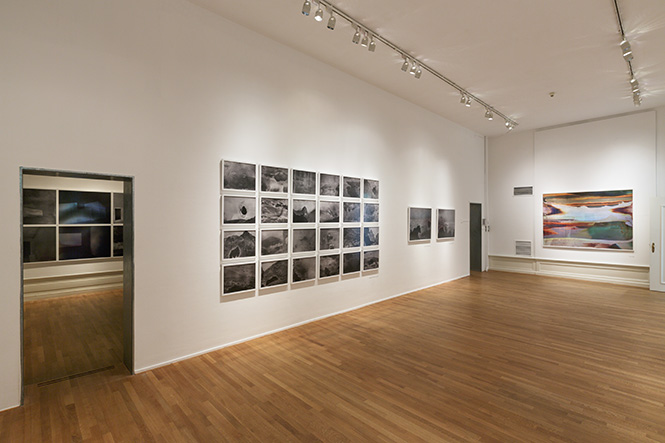
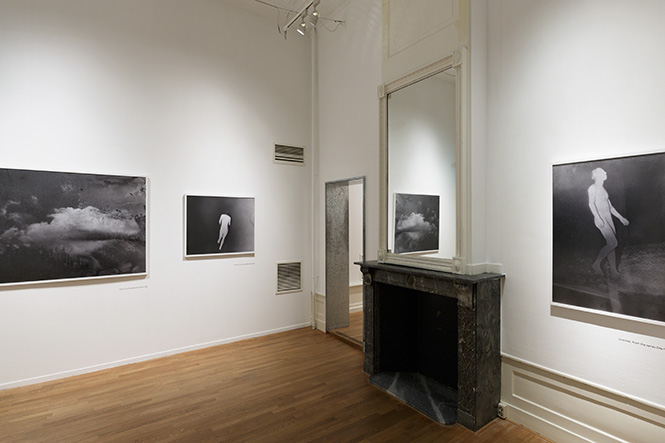
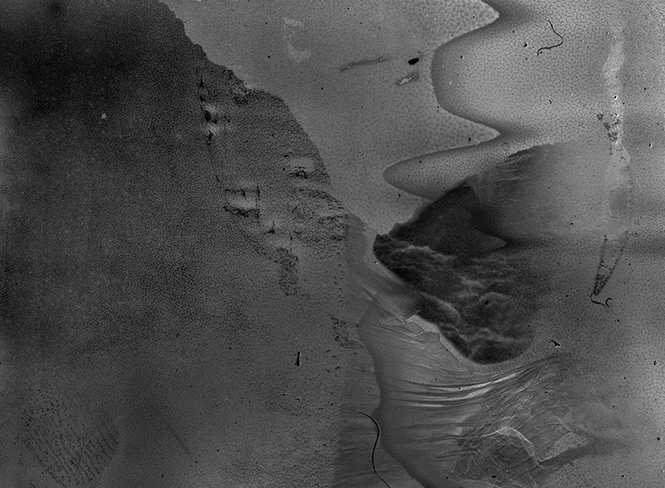
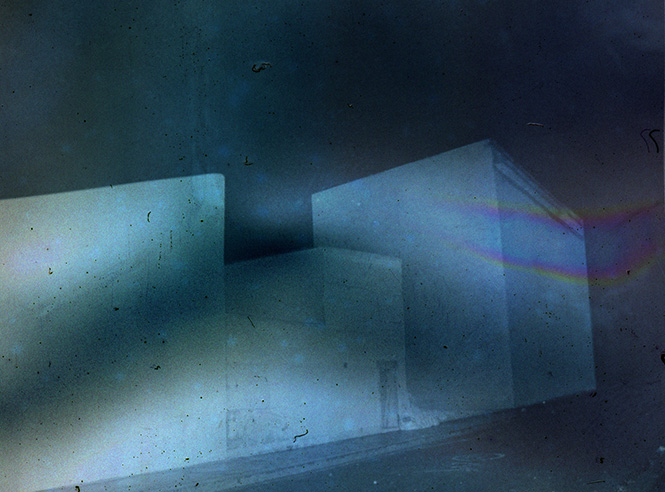
このシリーズでは撮影によってイメージを作ることをせずに、未撮影の大判のフィルムを多層に重ねて熱現像することでフィルムの物質的な側面を引き出そうと考えました。乳剤を浸食した熱湯の痕跡や、現像の過程でフィルムの間に残った薬品が結晶化する、そういった細部をスキャンして読み取ることで、カメラを使った撮影より細密なディティールを再現しました。
写真にとっての現実性は撮影現場での記録である、ということが一般的な考えだと思いますが、本来は記録されたイメージよりも具体的であるはずのフィルムの物質性を強調することで、却って抽象度が高まっていくという抽象と具象の逆転した見え方に興味を持っています。フィルムなどの記録メディアがその物質的側面を主張することは、撮影によって記録されたイメージを阻害する要素としてのノイズだと捉えられています。メディウムは伝えるべき記録を阻害してはならず、透明であるべきだという考えが写真の価値基準となっていると思います。
近年のデジタルカメラの発達が象徴的です。より細密で鮮明に、素早く簡易的に目の前の光景を記録する。カメラメーカーの特色を最低限保ちつつも、私たちの持つ世界の見え方の平均値を正確に捉えた結果のイメージが “現実=写真” と位置付けている、と捉えられます。
今回のアブストラクトシリーズでは、そういった状況を逆説的に捉え、イメージを抽象化する要因となる物質的現象を撮影における記録性に置き換え、”現象=記録=写真” としての作品を提示したいと考えています。
For this series, I tried not to take pictures, and tried to draw out the physical aspect of the film by layering unused large format films and heat developing them. By scanning the details of the film, like the taints from the boiling water eroding the emulsion or the chemicals that had remained between films during the developing process and crystalized I reproduced a more minute texture that I can’t produce with camera.
I guess it is common to think that the documented image is what is real in photography, but by accentuating the materiality of the film, which by nature is more real than the documented image, the image actually becomes more abstract, and I’m interested in this reversed perspective.
Emphasis on the physicality of the recording medium is considered a ‘noise’, an element disturbing the recorded image from the photo shoot. The standard criteria for photography is that the medium needs to be neutral and not disturb the visual information of the image that has to be delivered to viewer. The recent development of digital cameras is symbolic of this. It quickly and easily captures the scene in front of you, with more detail and clarity. This can be understood as , whilst minimally maintaining the characteristic features of the camera manufacturers, we see/consider an image that accurately captures our average perspective of the world as ‘reality = photography’.
For this abstract series, I wanted to look at this situation paradoxically by replacing the materiality phenomenon which causes the abstraction of an image with the documenting quality in a photo shoot and introduce work with the concept of “development = documenting = photography”.
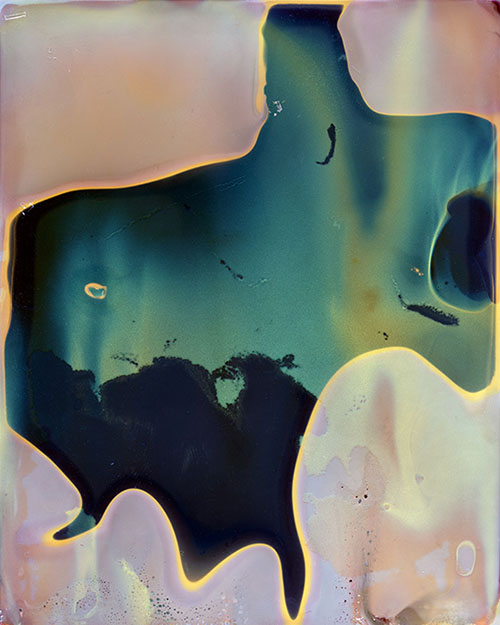
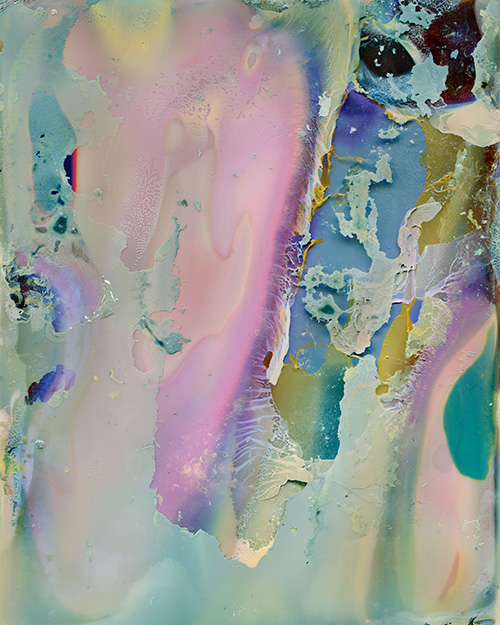
そうですね。それ以前にも海外のブログや雑誌などに作品を送っていましたが「Back Yard」のような反応はなかったですね。とても幸運でした。というのも、この作品が白黒であることはほとんど偶然に近い形で、当時はまさかこのような反応を貰えるとは思っていなかったからです。おそらく、日本人がゼロックスコピーを使って白黒で自費出版をしている、ということが日本写真の文脈へとつながり、付加価値が生まれたのだろうと思います。
日本国内での活動だけではわからなかったのですが、海外には出版物の市場がしっかりと確立されていることを実感しました。それは単純に日本国内のシェア数よりも全世界のシェア数のほうが圧倒的に多い訳なので当然なことかもしれませんが。
展示用に額装した作品よりも本の方がより素早く多くの人へ届けることができる可能性を持っていると思います。ただしその分、話題性の有効期間も短いとも思います。
そう言っていただけるととても嬉しいです。僕自身、制作において量を多く作っていくこと、その上でどのように強度を上げていくかということをとても重要に考えています。
制作の量に関しては、前提としてスナップ写真が元になっているということが大きな要因だと思います。一度に大量の写真を撮影しますし、撮影したからには全ての写真を使いたいと思うところもあります。ただ、それはもちろんとても難しいことなので、できる限り撮影した写真に使用する機会を与える為にも、時間を置いては何度も何度も全てを可能な限り見直していく、というようにしています。そうすることで、撮影された写真の持つ様々な側面を見落とさないようにしたいと思っています。
最近は一度の撮影で多い時に1000枚から2000枚ほど撮ります。多くの量を撮ると必然的に1枚の撮影に対する意識は弱まり、使う為に撮るのではなく、使える可能性を撮るという行為になります。撮影は自身の理想的なイメージを薄め、外部の偶然性をより多く含ませる作業であり、編集や加工によって再び自身の持つ理想に近づけ、現像を通してまた偶然性を含ませます。その連続のなかで、イメージが物質性や偶然性をまとい、強度を持つようになるのではないかと思います。
Yes. I have sent work to overseas blogs and magazines before but I never got such a big reaction as ‘Back Yard’. I truly feel lucky, because it was a bit of a coincidence that I made black and white work, and back then, I never expected to get such reaction with them. I guess it’s connected to the context of Japanese photography that Japanese make self-publishing book with Xerox copy, and people from abroad find value in that.
I didn’t realize this when I was working only in Japan, but there is an established market for publication abroad.Of course, simply because the global market share is by far bigger than the domestic share, it’s not surprising.
Also, with books, there is the possibility to show your work to more people, more quickly than the framed work in an exhibition, although I think books have a shorter life as a subject of a buzz.
I’m really flattered.For me, it is important to make in quantities, and from then, think about how to enhance the strength of the work.
Regarding the number of works, the biggest reason is because I’m using snapshots. I take massive amount of photographs in one time, and since I took them, I would like to use all of them. Of course, this is difficult, so I review the pictures millions of times, as long as I can, to find as much opportunities as I can for the pictures to be used. By doing this, I’m trying not to overlook the various aspects of each photograph.
Nowadays, I take one or two thousands pictures at one time, tops. The attention you pay to a picture inevitably weakens by taking so many amount, so I don’t take pictures to use, but I take for the possibility to use.
Photo shooting is a process where I tone down my ideals put more accidental elements on the image. Then I make it close to my ideal by editing and after that, I put accidental elements by developing. I think my work achieves its strength by the repeating these process.
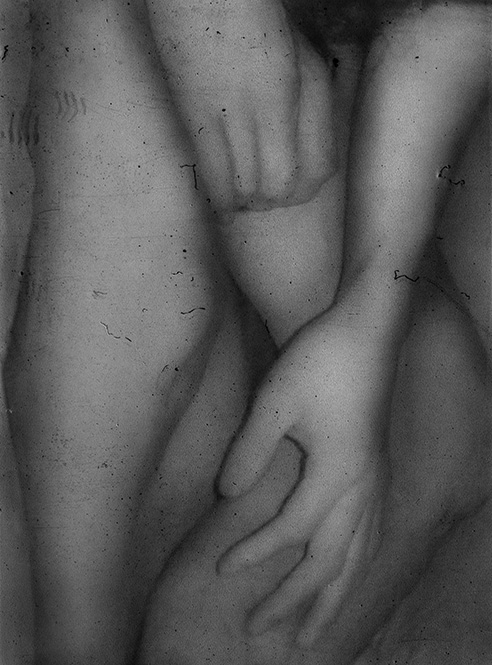
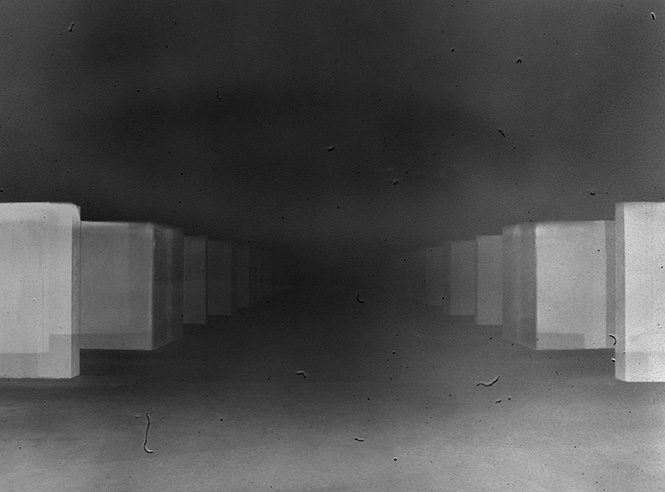
影響はとても大きいですね。写真を始めてからフィルムカメラや印画紙での暗室作業を5年ほど続けていたのですが、なかなかうまくいかず、半ば挫折しそうになっていました。その頃は何が駄目なのかもわかりませんでした。その後、開き直って当時絶対に使うまいと思っていたデジタルカメラを購入し、1、2年の間とにかくあらゆるものを撮影をしていました。その過程でPhotoshopを購入し、画像をいじってみるようになりました。
デジタルカメラの簡易性によって、自分の持つ理想的なイメージや先入観が入り込む隙がないほどの撮影の量とスピードを得られたと思います。Photoshopで編集することで、撮影の後の様々な段階で写真に関与できること、また、その必要性を意識できるようになったと思います。撮影後の操作によって、何度も保存したり、元と違う形に仕上げられることは、幼少期にRPGなどのファミコンゲームに多くの時間を割いていた僕にとってはとても自然なことであり、本質的な行為だと捉えています。
インターネットの存在もとても重要です。パソコンを買ったのは22、23歳の頃だったと思いますが、毎晩仕事から帰っては音楽をダウンロードして、それを待っている間に、色々な情報を漁るという生活をしていました。インターネットは欲望に対してとても従順な道具だと思います。一つを知ったら次、さらに次と、ジャンルやメディアを変えていくことができます。そのお陰か、ジャンルやメディアの違いという意識もずいぶん薄らいできたと思います。
考えた上で使うというよりは、使った上で考えていくということが多いです。写真は、カメラやフィルム、現在ではプリンターやスキャナーなど一般的にも様々な道具を使用する訳で、それらの道具とつきあっていく必要があります。”私”がイメージを作るのではなく、何を使い、どう組み合わせるのかといったことの結果に対する選択者としての”私”がいる、という方がしっくりくる気がします。道具を扱う上でその個体の持つ偏りやノイズを意図的に引き出すことも重要だと思います。その上で、なぜその状態のものを選択したのかを考えていくことが大事な作業です。
The influence is big. I’ve used film camera and worked with developing paper in a darkroom since I started photography, but it didn’t work out very well and I nearly gave up photography. At that time, I couldn’t understand what was wrong. After a while, I thought, what the heck and bought a digital camera that I decided I would never use. And then, I took so many things with the camera for one or two years, and during that time, I started to use Photoshop as well.
The simpleness of the digital camera allowed me to shoot an amount, at a speed, without having my ideals and preconception to cut in. I also learnt that I can involve myself to various levels of image after shooting by using Photoshop. Being able to save an image a number of times or making different things from an original is quite natural to me as I spent a lot of time playing computer game and role-playing game when I was little.
Also, the Internet is very important for me. I remember I bought my laptop when I was 22 or 23 yeas old. When I came back to home from work every night, I downloaded music and while I was waiting for it to complete, I was searching various information. I think the Internet is a kind of device which makes people amenable to desire. When you know one thing, you try to know other things, and it continues. Change the genre and it never stops. Perhaps from this experience, I’m now less conscious about the difference in genre or medium.
I think about the combination after I start the work rather than before. There are so many tools for photography such as camera, film, and nowadays, it’s common to use printer or scanner and so I believe I need to work with them. I feel like I exist more like a selecting person. ‘I’ decide what to use and how to combine them, rather than ‘I’ make the image.. Also, I think it’s important to intentionally bring out the imbalance and noise of each tool. From then, it becomes important to consider why I chose them.
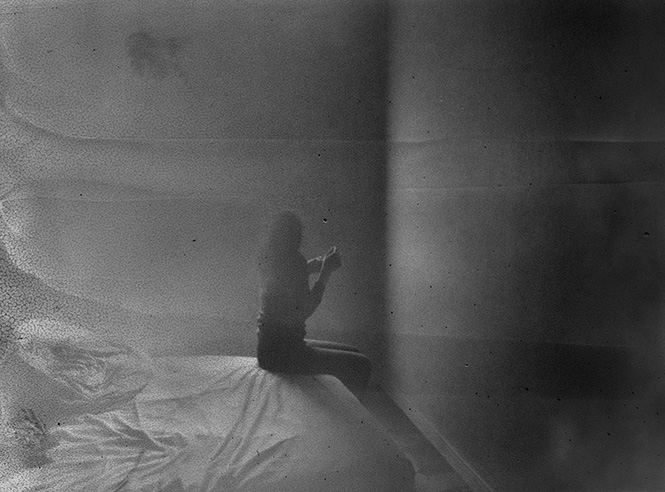
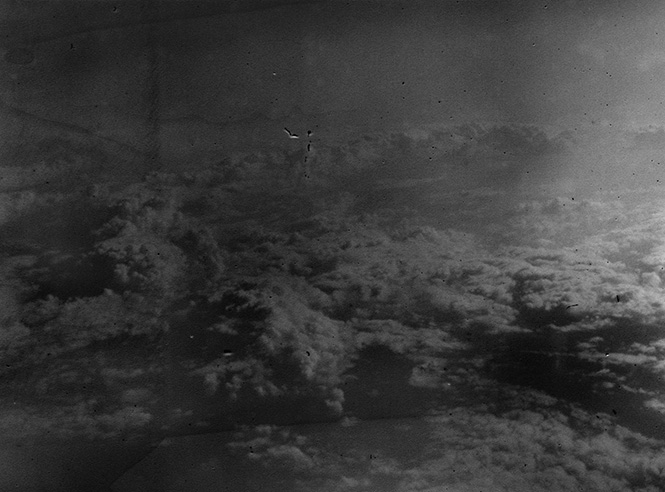
タイトルの「VERTIGO」はめまいという意味ですが、そのような身体的状態、時間感覚をシークエンスとして構成しています。平衡感覚を喪失した状態を1枚で説明するのではなく、編集や構成のなかでのイメージの断続性によって異化された印象を見る人に与えられないだろうかと思いました。
身体的な感覚とともに重要なことが、時間的な平衡感覚の喪失です。例えば、私はよく今が何時で何月何日なのか見失うことがあります。それは昼夜逆転の生活や、最近の移動による時差など、一年を通して固定された時間軸で生活をしていないからです。それに加え、例えば夢での出来事や昔の経験が、ついさっきに起きた出来事のように強い存在感を持って思い出されることが多くなってきたように思います。
一日24時間、それが365回転することで1年が経過するという全ての人が共有可能な時間があるが、それとは別に一人一人が持っているであろう複雑に入り組み同時に何本もの流れを持った個人の時間認識があるはずで、私はその個別の偏った時間感覚の反映された世界に興味を持っています。
セルフパブリッシングに関しては、写真集を作るという意識ではなくて、作品制作そのものとして捉えています。当然、個人で本を作る訳なので色々な判断の決定が自由なのですが、その反面、資金的な制限や、良くも悪くも自分の手癖や思い込みによって作品の幅に制約が生まれてしまう所があります。その点、人を交えての制作になると、細部への決定や変更を行いづらくなる一方で、資金の面から手作りとは異なるクオリティーを求めることができ、編集においてはより客観性が必要になることが増えます。その結果、流通を踏まえた一つの製品として精度を上げていくことが可能になるように思います。またその過程でのやりとりで、個人では思いつかないようなアイデアが生まれることはとても刺激的です。
今回は写真集が完成するまでに想定していたより長い時間がかかったことも、作品を冷静に見返す時間になったという意味で良い結果になったと思います。主体性が誰かに偏るのではなく、どうすればより良い形と内容で提示できるか作品自体を見て考えて作るという点で、作品を主体とした3人の良い関係性を築けたのではないかと思います。
大山光平, July.2014
The title of the book is “VERTIGO”, and it consists of, in a sequence, the physical state and time sensation of being in a vertigo. With the work, I wondered if I could give the viewer a foreign impression of the situation of being off balance from the images that are intermittently organized in the book.
The loss of time sensation is of the same importance as the physical sense. For example, I often lose track of the time or date because I’m not living in stable temporal axis. My day and night is reversed or the time difference between countries where I often visit for my projects recently. In addition, I often remember incidents in a dream or my past experience as if it happened yesterday. We share the same amount of time, 24 hours a day and 365 days a year, but each of us should have an independent temporal awareness. And then, each temporal awareness is intertwined in a complex way and the world goes around. I’m interested in the world where our individual time sensation is reflected.
About my self-publishing, I’m considering it not as a photo book, but as my work itself. Of course, it allows me more freedom in deciding for various things, but on the other hand, there are financial limitation and limits in the range of expression because there are only elements that I have. Compare with that, production that involves others have difficulty with judgment or change in details, but I can achieve higher quality than self-publishing. I need more objectivity for the editing process so I could raise the quality of the book as a product. And then, the communication we had in the process was really provocative for me as there were many ideas that I would have never thought of on my own.
It took longer time than I expected to complete the photo book, but I think it was good time to take a closer look at the works for me. Also, I think we constructed a good relationship among the three of us, as we developed ideas without leaning to one person’s opinion.
Kohei Oyama, July.2014
横田大輔
1983年、埼玉県生まれ。日本写真芸術専門学校卒業。主な受賞にOutset|Unseen Exhibition Fund(2013)、第2回写真「1_WALL」展 グランプリ(2010)。主な展示に「Site/Cloud」(G/P Gallery,2013)、Unseen photofair from “G/P gallery”(2013)、Paris photo, from “East Wing”(2013)、主な出版に「site/cloud」 (artbeat publishers)、「Untitled」 (Goliga Books)、「Nocturnes “AM projects”」 (Dienacht Publishing)など。
Daisuke Yokota
Born in Saitama,Japan,1983
SELECTED HONORS and AWARDS
2008 New cosmos of photography (31th competition) ; Honorable mention
2010 1_Wall Exhibition(2th competition); Grand Prix
2013 Outset | Unseen Exhibition Fund
SELECTED EXHIBITIONS
2012
MP1『Expanded Retina』/ G/P gallery,Tokyo
TOKYO FRONTLINE, 3331 Arts Chiyoda, Tokyo
Unseen photofair, Unseen collection(G/P gallery) / AM Projects(East Wing) Amsterdam
2013
Solo Exhibition “Site/Cloud” G/P gallery Tokyo
AM projects “All Colours Will Agree in the Dark” at Noorder Licht Amsterdam
Actual Colour May Vary / AM Projects “Artist as Curator Projection Programme” Belfast Photo Festibal Ireland
Unseen photofair, from “G/P gallery”, Amsterdam
Paris photo, from “East Wing”, Paris
2014
「The Outset | Unseen Exhibition Fund」Solo Exhibition “Site/Cloud” at Foam Museum, Amsterdam
PUBLICATION
2012
Back Yard (Self Published)
Site (Self Published)
Nocturnes “AM projects” (Dienacht Publishing)
2013
site/cloud (artbeat publishers)
Untitled (Goliga Books)
2014
Linger (Akina Books)
Vertigo(Newfave)
